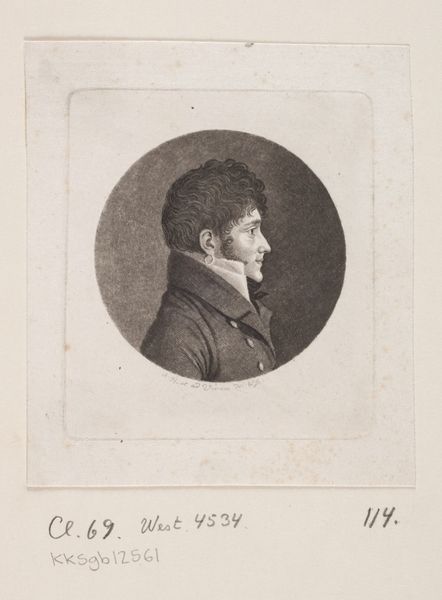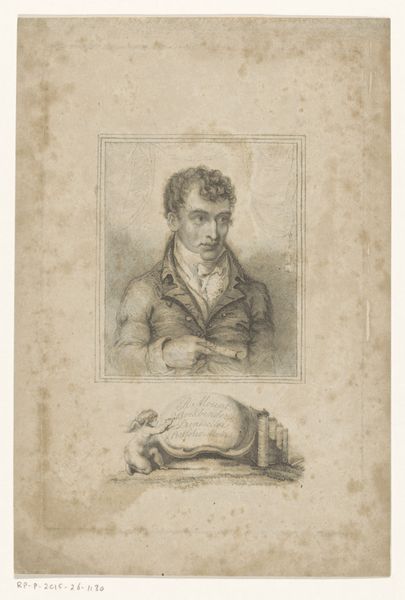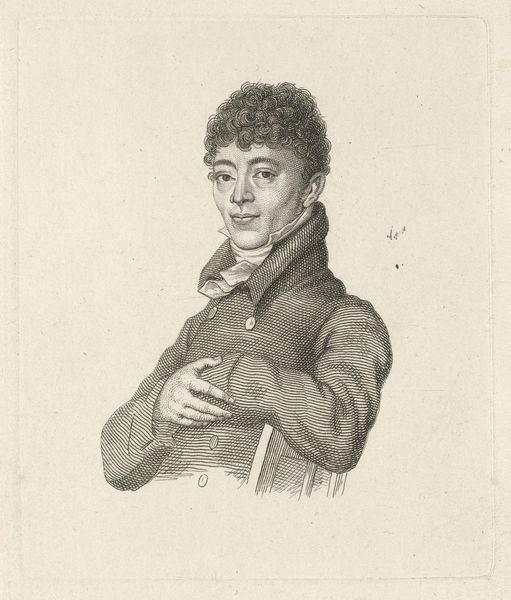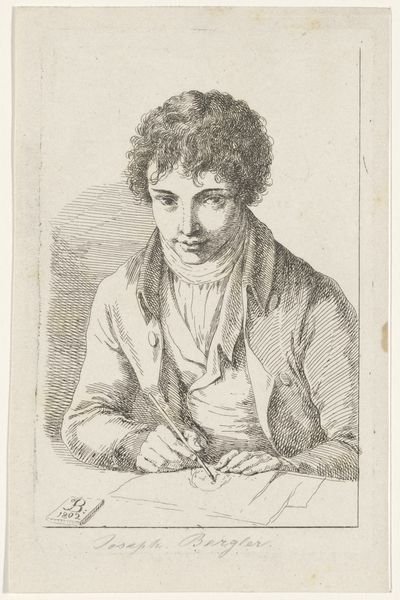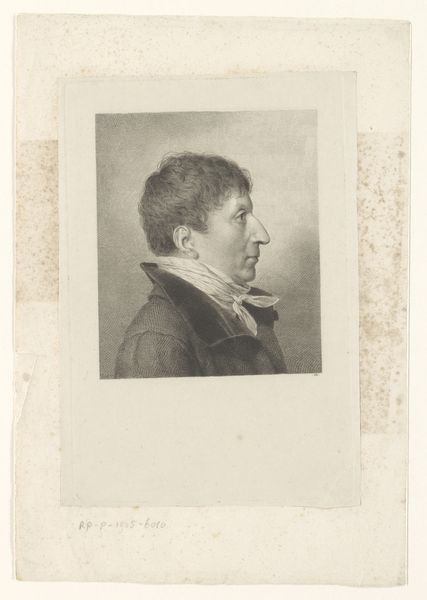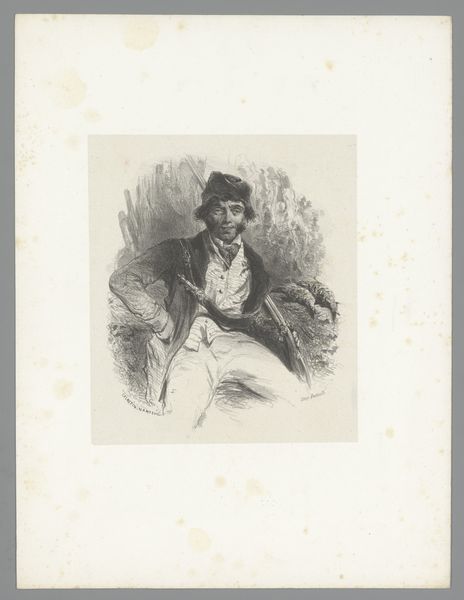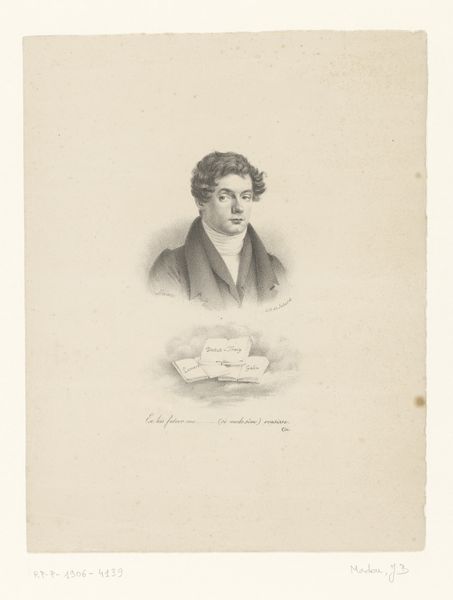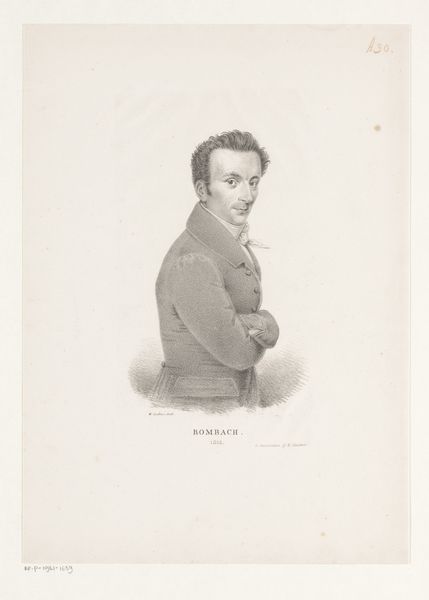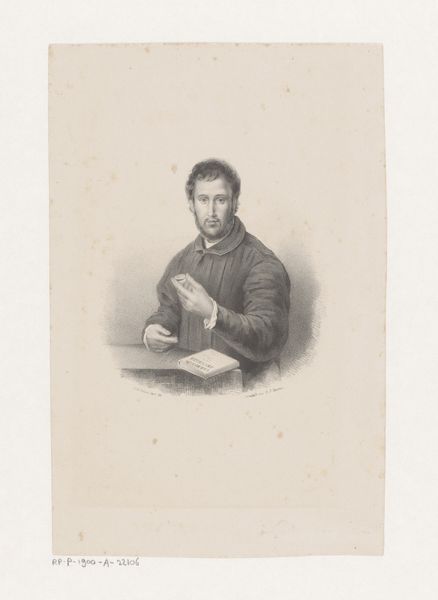
drawing, pencil
#
portrait
#
pencil drawn
#
drawing
#
light pencil work
#
shading to add clarity
#
pencil sketch
#
old engraving style
#
portrait reference
#
pencil drawing
#
romanticism
#
pencil
#
limited contrast and shading
#
portrait drawing
#
pencil work
Dimensions: height 184 mm, width 132 mm
Copyright: Rijks Museum: Open Domain
Editor: This is Johann Georg Mannsfeld’s “Portret van Johann Adam Klein als tekenaar,” made around 1815, using pencil. It’s interesting to see an artist portrayed actively drawing, like a snapshot of his profession. How do you interpret this work? Curator: It's fascinating to see how artists represented themselves and their colleagues in the 19th century. This portrait, rooted in Romanticism, positions Klein not just as an individual, but as a creative genius at work. Consider the rising importance of the artist in society at the time; representations like this reinforced their elevated status. The act of drawing becomes symbolic. What do you notice about the composition and the gaze of the sitter? Editor: I notice his gaze is averted, almost secretive. The tight oval composition contains him, almost framing his intense creativity. Curator: Exactly. The artist, Mannsfeld, is carefully constructing an image that speaks to both Klein’s individual talent and the broader cultural valorization of the artistic profession. This wasn't just about likeness; it was about projecting an image of artistic dedication and intellectual pursuit for public consumption. What impact did academies have at this time, you think, on perceptions of the artist? Editor: It must have impacted artists profoundly. Were they essentially branding themselves as part of that elite group through works like this? Curator: Precisely. It’s an advertisement for both Mannsfeld’s skill and Klein's membership in the burgeoning artistic establishment, which would provide access to training and patronage, shaping artistic styles and career trajectories. Editor: That reframes my whole view! Now I see how much the artwork communicated beyond just the immediate image of an artist drawing. Curator: These works tell a broader history of artistic identity and the structures that shaped it.
Comments
No comments
Be the first to comment and join the conversation on the ultimate creative platform.
